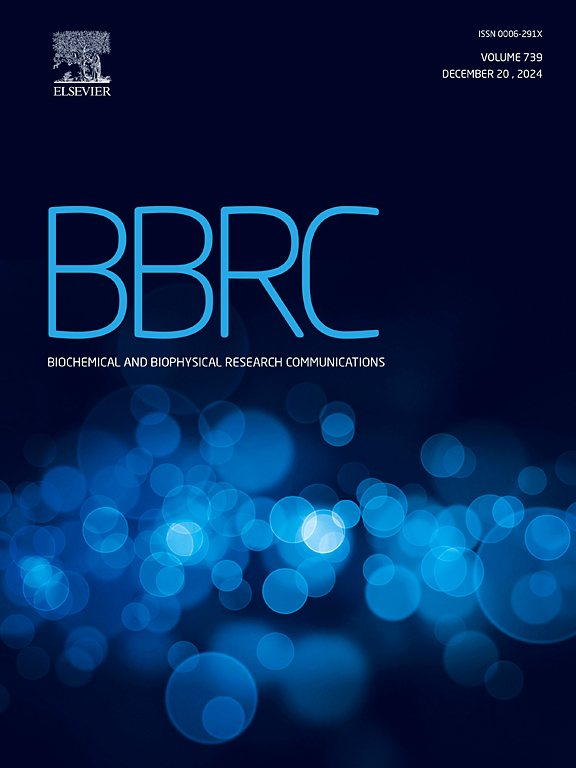The transcription factor TaWHY2-6A acts as a positive regulator in response to drought tolerance in transgenic plants
IF 2.5
3区 生物学
Q3 BIOCHEMISTRY & MOLECULAR BIOLOGY
Biochemical and biophysical research communications
Pub Date : 2025-03-03
DOI:10.1016/j.bbrc.2025.151580
引用次数: 0
Abstract
Drought stress severely affects wheat yield, and Whirly (WHY) transcription factors (TFs) are essential in modulating plant tolerance to abiotic stresses. In this study, we identified six WHY members in the wheat whole-genome database, categorized into Group I and Group II, with three homologous WHY genes in each group. From the four selected drought-responsive candidate genes with upregulated expression, we focused on TaWHY2-6A, which was significantly upregulated under drought stress. Under drought conditions, TaWHY2-6A transgenic Arabidopsis exhibited significantly higher chlorophyll content and better growth status compared to wild-type (WT) plants, indicating that TaWHY2-6A enhances drought resistance in transgenic Arabidopsis. In contrast, wheat lines with silenced-TaWHY2-6A exhibited a more severe wilting phenotype following drought treatment, accompanied by elevated levels of H2O2 and O2.-, and reduced antioxidant enzyme activity. These findings suggest that the wheat TaWHY2-6A gene positively regulates drought resistance under drought stress. This research provides a theoretical basis and valuable genetic resources for drought-resistance breeding in wheat.
求助全文
约1分钟内获得全文
求助全文
来源期刊
CiteScore
6.10
自引率
0.00%
发文量
1400
审稿时长
14 days
期刊介绍:
Biochemical and Biophysical Research Communications is the premier international journal devoted to the very rapid dissemination of timely and significant experimental results in diverse fields of biological research. The development of the "Breakthroughs and Views" section brings the minireview format to the journal, and issues often contain collections of special interest manuscripts. BBRC is published weekly (52 issues/year).Research Areas now include: Biochemistry; biophysics; cell biology; developmental biology; immunology
; molecular biology; neurobiology; plant biology and proteomics

 求助内容:
求助内容: 应助结果提醒方式:
应助结果提醒方式:


